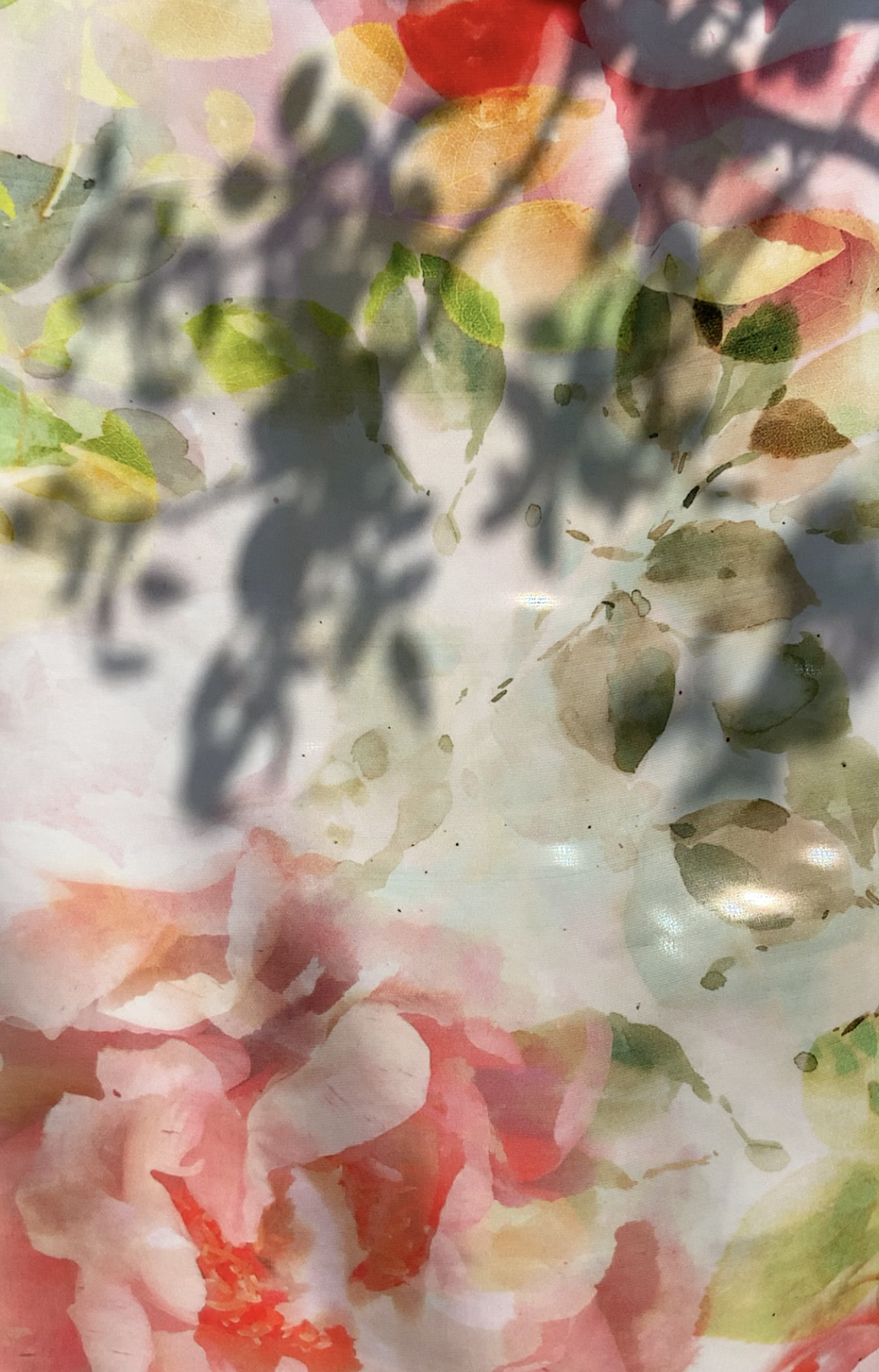
Love your clothes, love the environment!
An introduction to the sustainable fibres used in Sungmin….we believe you should know where the fabrics you wear come from!
EcoVero Viscose
Soft and fluid, drapes like silk
Easy care and durable in washing
Degrades completely
Since the introduction of EcoVero fibres by Lenzing, Sungmin have moved more and more of their production to this fibre.
EcoVero Viscose is derived from sustainable wood and pulp from certified and renewable forestry sources located in Austria and Bavaria. Ecovero is ideal as they provide complete transparency, from the raw material, through the production of the fibre until it gets to the weaver and subsequently our printing mill.
The entire lifecycle of the raw material is monitored by EU Ecolabel, through the fibre production to the distribution and any waste disposal.
The fibre is produced in a state of the art facility using an innovative environmental process that guarantees 50% less emissions and water consumption than traditional viscose.
Sungmin has a rich understanding and experience of viscose so it was an easy transition to use Ecovero Viscose and achieve amazing handles and performance in the finished fabrics.
Tencel
Super soft to touch
The fabrics are breathable so regulate the absorption and release of moisture and sweat
They are strong and withstand repeated washing cycles
Good colour retention
Tencel Lyocell and Tencel Modal are both made from sustainable and renewable wood and pulp, in certified and managed forests in Austria. Absolutely nothing goes to waste, the energy is renewable and all the chemicals are reused in the production cycle.
The environmental footprint is reduced 60% compared to traditional viscose.
Tencel fibres are 100% biodegradable; its a material that is derived from nature and at the end of its life will return to nature!
BCI Cotton
“27 million tonnes of cotton is produced every year, by 2028 cotton is projected to reach 29 millions tonnes, the problem is not going away”
Established in 2009, the Better Cotton Initiative is the largest cotton sustainability programme in the world and the most widely used. In part this is because it is less stringent, only monitoring the cotton harvesting and farming, it does not certify the supply chain.
BCI supports farmers to improve environmental and working conditions, which are more socially and environmentally better practises.
The criteria covers crop protection, water management, health of the soil and natural habitats, bio diversity, land responsibility, fibre quality, workers well being and management systems.
The BCI is funded by licensing fees, there is no charge to the farmer but to other mills and retailers involved in the production chain of a garment. The licensees are required to meet certain criteria, depending on the function in the chain but this is not as tightly managed and monitored as other certification companies, in fact it is the retailer that has to make sure each section of the chain is correctly adhering to the BCI standards, before they claim a garment contains BCI cotton.
In 2019, over 1.5 million tonnes of cotton fibre was yield using BCI methods, this accounts for 6% of the global cotton production and is a 40% increase on 2018.
GOTS Cotton
The Global Organic Textile Standard is the worldwide textile processing for organic cotton fibre which includes ecological and social criteria. It requires the assessment of the entire supply chain of the fabrics production cycle, this means it is the most thorough certification possible.
Established in 2005, the GOTS certification aims to define and ensure the organic status of cotton textiles from harvesting through the environmentally responsible manufacturing process, to the final product which is then labelled and visible to the consumer.
GOTS cotton fabrics and garments have to have the minimum of 95% GOTS cotton in their composition, this is managed across all the global markets and is monitored at every stage.
The GOTs criteria covers, all fibre processing, all chemical processing, dye and printing solvents to make sure they are not toxic and biodegradable. Waste and discharge is all controlled and strict records must be kept on water, energy and chemical use. Packaging also has to be from renewable sources.
The fabric performance parameters must be met on washing and colour fastness so there is no colour loss.
Social criteria covers the welfare, health and safety, legal rights, minimum ages, wage and working conditions and ensures their is no discrimination practised in the organisation.
In brief, the standard covers all the processing, manufacturing, packaging, labelling, trading and distribution of all fibres yarns, textiles, clothing and home textiles and is globally recognised. It doesn’t get better than that!
GRS RECYCLED STANDARD
The Global Recycled Standard is an international voluntary standard that provides certification of recycled fibre content.
The GRS certification is intended for use with any product that has at least 20% recycled material.
Each stage of the production is required to be certified starting at the recycling process through to the retailer of the final product.
GRS uses the ISO 14201 international standard as the definition of recycled content, the reason being that they are globally known, strict and established.
After determining what can be recycled from the raw material and how to do it (screening, crushing, washing) the product is then processed accordingly and the restricted substances/ chemicals, energy, water and effluent is monitored.
All social policies are also specified and managed within the organisations.



